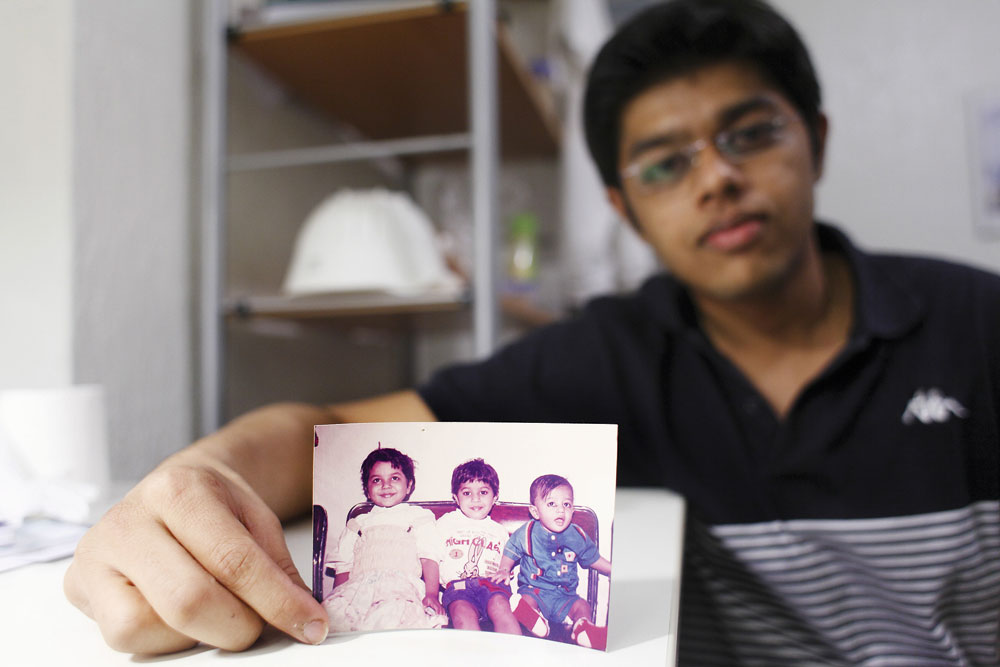Puneet Kedia (22) uit Mumbay, India is hier sinds augustus 2011 om zijn master sustainable energy technology te halen. Op het prikbord boven zijn bureau prijkt een jeugdfoto van hem met zijn twee oudere zussen.
Het kleine jongetje rechts op de foto is Kedia. Via Skype en e-mail heeft hij ongeveer om de dag contact met hen. Ze hebben het over zijn ervaringen hier in Delft. Jaloers waren zijn zussen toen hij hen beelden liet zien van zijn eerste ervaringen in de sneeuw en op het ijs van afgelopen winter. Hij zal zijn zussen zeker uitnodigen wanneer hij over anderhalf jaar zijn masters-titel behaalt. Maar dan zal er waarschijnlijk geen sneeuw liggen…
Consumer products like sunglasses and crash helmets, are currently being designed using data based on people residing in the western hemisphere. The drawback to this practice is that the resulting products are then less suitable for use by the Chinese.
But Associate Professor Roger Ball of Hong Kong Polytechnic University intends to change this with his project ‘Size China’. As part of his PhD research in 2006, Ball travelled across China with a 3D laser scanner measuring the skulls of some 2000 Chinese. This spring he will defend his thesis, ‘Size China, a 3D anthropometric survey of the Chinese head’.
“Doing the measurements was quit a feat,” recalls Ball’s co-supervisor, Dr Johan Molenbroek, of the Applied Ergonomics and Design department (faculty of Industrial Design), who helped Ball in China on several occasions. “The Chinese all have black hair, which reflects the laser beams, so we had to put nylon stockings around their heads.”
In an article in Delta in 2008, Ball said he was planning to scan the heads of people all around the world. What has become of that follow-up project, named ‘Size Global’? He is still looking for partners for that ambitious project, the designer replies by email. “And,” he adds, “to be honest another reason that project didn’t get off the ground yet is that TU Delft had kept me very busy trying to complete my PhD.”
The researcher is quick to add that his company has “some impressive sales to some of the top companies and brands in the world as they rush to develop products for China’s surging domestic market.”
Ball’s initial project in China was funded by the Chinese government. Such funding is difficult to find for the follow-up project, Ball explains: “I’ve found that countries are interested in their own individual population and not anyone else’s.”
Ball has been concentrating on scanning new areas of the Chinese body, including feet and hands. And he has developed new design tools: “We’re working on a CAD [design program, ed.] plug in for our Size China data. Once the datasets of other populations become available we can just plug and play with the data. I fully expect over the next ten years to develop the world’s first ‘Body Shape’ library for use in product design and development.”



Comments are closed.